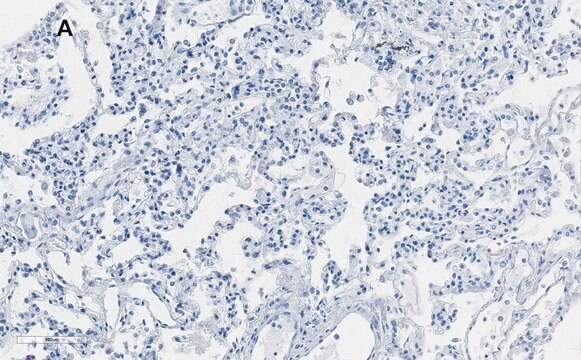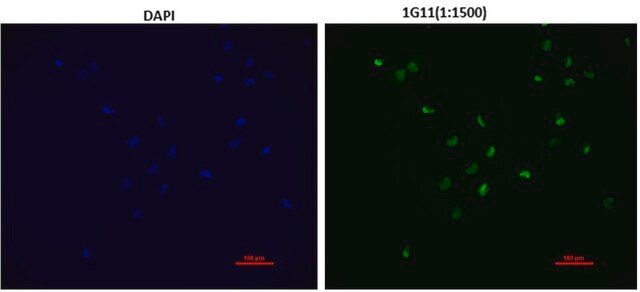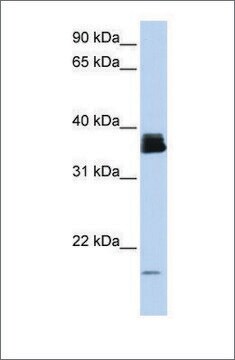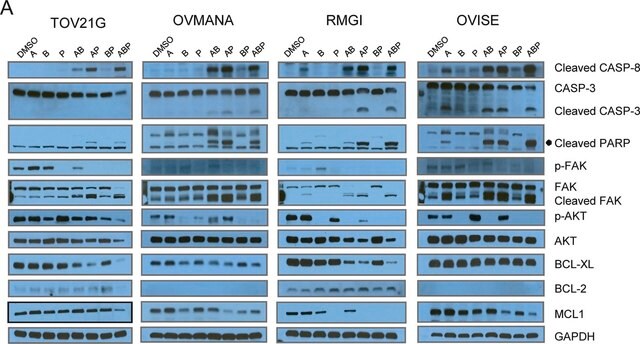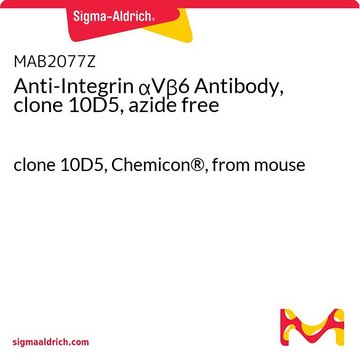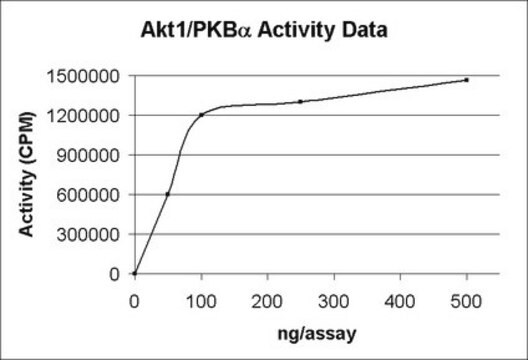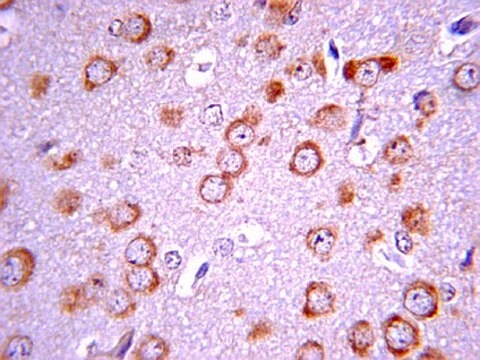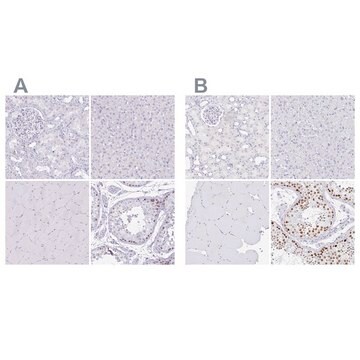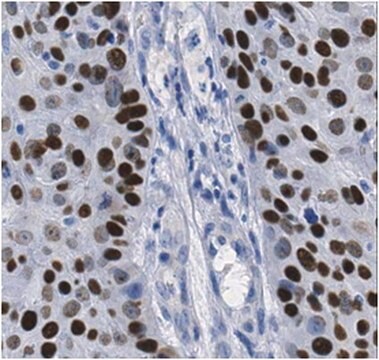MABF3063
Anti-Tax-1 Antibody, clone Lt-4
Synonim(y):
Protein PX, Protein Tax-1, Protein X-LOR, Trans-activating transcriptional regulatory protein of HTLV-1
About This Item
Polecane produkty
pochodzenie biologiczne
mouse
Poziom jakości
forma przeciwciała
purified antibody
rodzaj przeciwciała
primary antibodies
klon
Lt-4, monoclonal
masa cząsteczkowa
calculated mol wt 39.47 kDa
observed mol wt ~60 kDa
oczyszczone przez
using protein G
reaktywność gatunkowa
(T-cell leukemia virus 1 (HTLV-1))
opakowanie
antibody small pack of 100
metody
ELISA: suitable
flow cytometry: suitable
immunocytochemistry: suitable
immunoprecipitation (IP): suitable
western blot: suitable
izotyp
IgG3κ
sekwencja epitopowa
Internal
numer dostępu Protein ID
numer dostępu UniProt
temp. przechowywania
2-8°C
Specyficzność
Immunogen
Zastosowanie
Evaluated by Western Blotting with recombinant Human T-cell leukemia virus 1 Protein Tax-1.
Western Blotting Analysis: A 1:500 dilution of this antibody detected recombinant Human T-cell leukemia virus 1 Protein Tax-1.
Tested Applications
Flow Cytometry Analysis: A representative lot detected Protein Tax-1 in Flow Cytometry applications (Peres, C., et al. (2019). J Virol Methods. 274:113728).
ELISA: A representative lot detected Protein Tax-1 in ELISA applications (Lee, B., et al. (1989). Tohoku J Exp Med. 157(1):1-11).
Immunoprecipitation Analysis: A representative lot immunoprecipitated Protein Tax-1 in Immunoprecipitation applications (Lee, B., et al. (1989). Tohoku J Exp Med. 157(1):1-11).
Western Blotting Analysis: A representative lot detected Protein Tax-1in Western Blotting applications (Lee, B., et al. (1989). Tohoku J Exp Med. 157(1):1-11; Tanaka, Y., et al. (1991). Int J Cancer. 48(4):623-30).
Immunocytochemistry Analysis: A representative lot detected Protein Tax-1 in Immunocytochemistry applications (Lee, B., et al. (1989). Tohoku J Exp Med. 157(1):1-11).
Note: Actual optimal working dilutions must be determined by end user as specimens, and experimental conditions may vary with the end user.
Opis wartości docelowych
Postać fizyczna
Rekonstytucja
Przechowywanie i stabilność
Inne uwagi
Oświadczenie o zrzeczeniu się odpowiedzialności
Nie możesz znaleźć właściwego produktu?
Wypróbuj nasz Narzędzie selektora produktów.
Kod klasy składowania
12 - Non Combustible Liquids
Klasa zagrożenia wodnego (WGK)
WGK 1
Temperatura zapłonu (°F)
Not applicable
Temperatura zapłonu (°C)
Not applicable
Certyfikaty analizy (CoA)
Poszukaj Certyfikaty analizy (CoA), wpisując numer partii/serii produktów. Numery serii i partii można znaleźć na etykiecie produktu po słowach „seria” lub „partia”.
Masz już ten produkt?
Dokumenty związane z niedawno zakupionymi produktami zostały zamieszczone w Bibliotece dokumentów.
Nasz zespół naukowców ma doświadczenie we wszystkich obszarach badań, w tym w naukach przyrodniczych, materiałoznawstwie, syntezie chemicznej, chromatografii, analityce i wielu innych dziedzinach.
Skontaktuj się z zespołem ds. pomocy technicznej